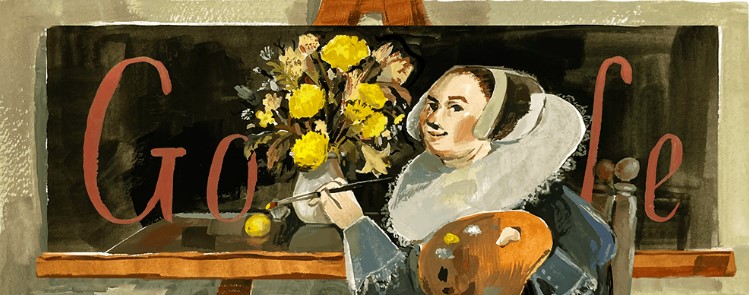Google celebrates works of Judith Leyster, Dutch Golden Age painter

- Country:
- Netherlands
Google today dedicates a beautiful artistic doodle to Judith Leyster, a 17th-century master painter and a central figure in the Dutch Golden Age. She painted genre works, portraits and still lifes.
Judith Leyster was born in Haarlem in 1609. Although art historians know little about her formal education, rumor has it she showed remarkable talent at a young age. She was baptised on July 28, 1609.
While the details of Judith Leyster's training are uncertain, she was mentioned by contemporary Haarlem poet Samuel Ampzing in his book Beschrijvinge ende lof der stadt Haerlem (1628). Samuel Ampzing described 19-year-old Judith Leyster as a painter of “good and keen insight.”
During that time, professional female painters were rare in Europe. But Judith Leyster never let this dissuade her. She signed with a distinct monogram: “J.L.” crossed by a star—a play on her last name. By 1633, she was admitted as a member of the Haarlem Guild of St. Luke. It has been suggested that Judith Leyster's Self-Portrait, c. 1633 (National Gallery of Art, Washington, D.C.), may have been her presentation piece to the Guild.
In 1636, Judith Leyster married Jan Miense Molenaer, a more prolific artist than herself who worked on similar subjects. In hopes of better economic prospects, the couple moved to Amsterdam where Molenaer already had clients. They remained there for eleven years before returning to Heemstede in the Haarlem area. She may have earned the respect of her peers and enjoyed financial success as an artist, but she was erased from history when art scholars later mistook her paintings as those of her male contemporaries’.
In 1892, a keen observer finally noticed a star insignia on one of Leyster’s paintings in the Louvre and remarked that it did not match the signature of the male artist’s. This forced the artworld to reckon with their decades-long misattribution, allowing Leyster to reclaim her place in history. Scholarly detectives have since identified more than 30 Leyster masterpieces.
Much of her other work, especially in music-makers, was similar in nature to that of many of her contemporaries, such as her husband Molenaer, the brothers Frans and Dirck Hals, Jan Steen, and the Utrecht Caravaggisti Hendrick Terbrugghen and Gerrit van Honthorst.
Judith Leyster died on February 10, 1660 at the age of 50. Google today celebrates her work by dedicating a doodle.
Also Read: Google celebrates works of Ana Mercedes Hoyos, a renowned Colombian artist
- READ MORE ON:
- Judith Leyster
- Google doodle
- Golden Age
- Dutch Golden Age










